Load-Tap-Changing Transformers and Voltage Control
Jonas Kersulis
January 25, 2017
1. Motivation
- LTCs control voltage online.
- Renewable generation fluctuations may strain them.
- LTCs are expensive and complicated.
Load Tap Changing (LTC) Transformer: a big piece of hardware

LTC: more than meets the eye
This is a tap changer.
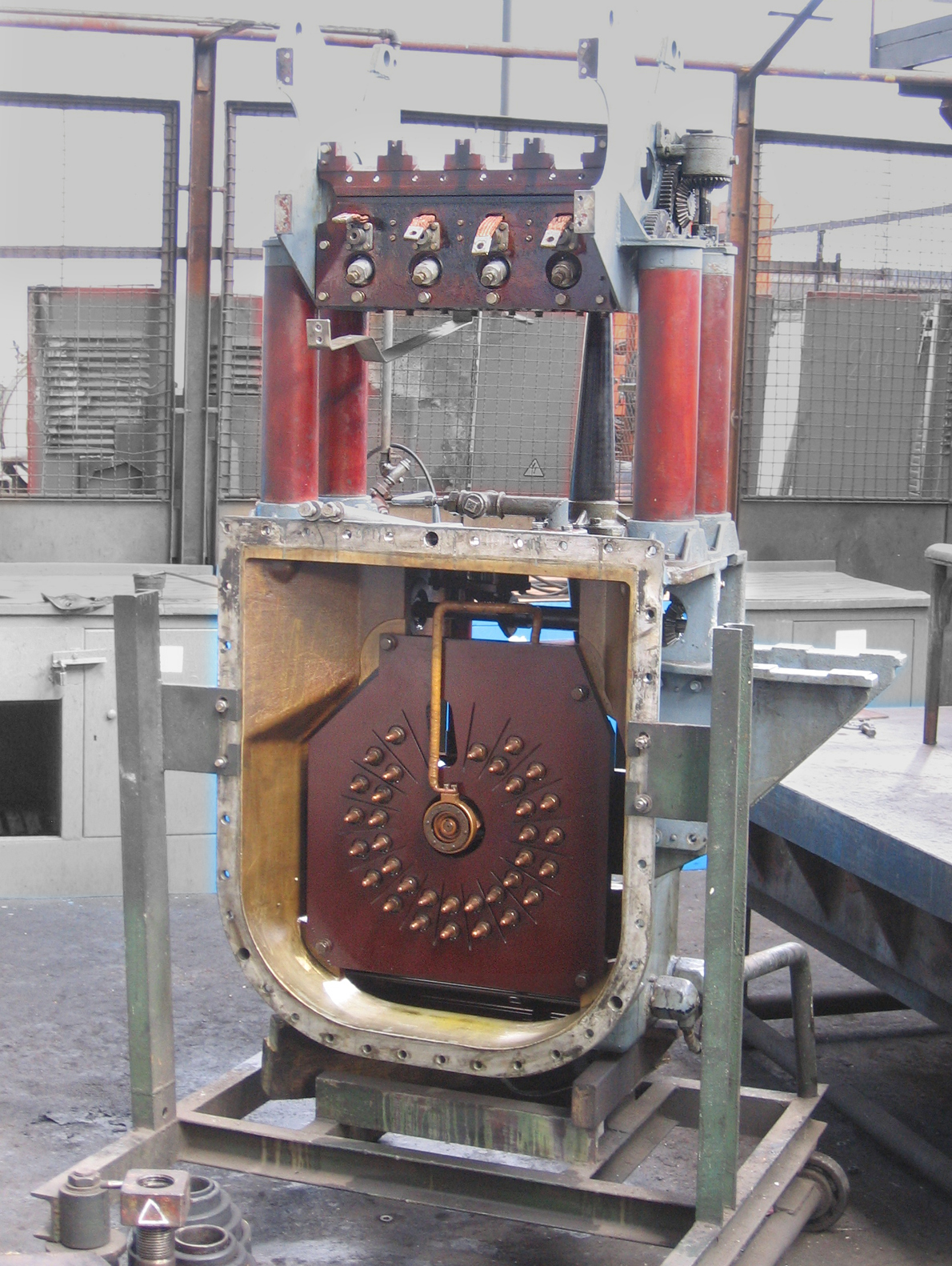
It can vary the transformer turns ratio online.
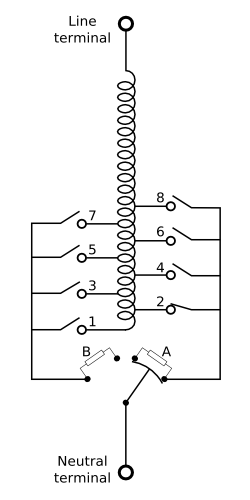
Role of LTCs
- Respond to voltage fluctuations online.
- Generation fluctuations typically known.
- Load fluctuations known well by now too.
Problem: Weather fluctuations not known.
So LTCs still play a crucial role.
Unfortunately, they are
- Expensive
- Discrete
- A major cause of system failure
Issue 1: cost

Issue 1: cost

Ibid.
Issue 1: cost

Ibid.
Issue 2: discrete behavior
Continuous signal, discrete device. We need
- Delays
- Deadbands
- Coordination
Details later.
Issue 3: system failure
The IEEE testing standard considers LTC lifespan to be 50k tap operations.Tap-changer failure most likely cause of medium-voltage transformer failure. Source
2. Modeling
Consider this simple network.
- Far left: the grid
- Next: substation LTC
- Then: connection to wind and a distribution feeder
- Far right: distribution LTC
LTC configuration basics

LTC Models
Wait, what's a DLTC? Where do time constants come from?
Consider two LTC models:
- DLTC: definite delay, counts time outside deadband
- ITLC: inverse delay, integrates deviation from deadband
DLTC Model
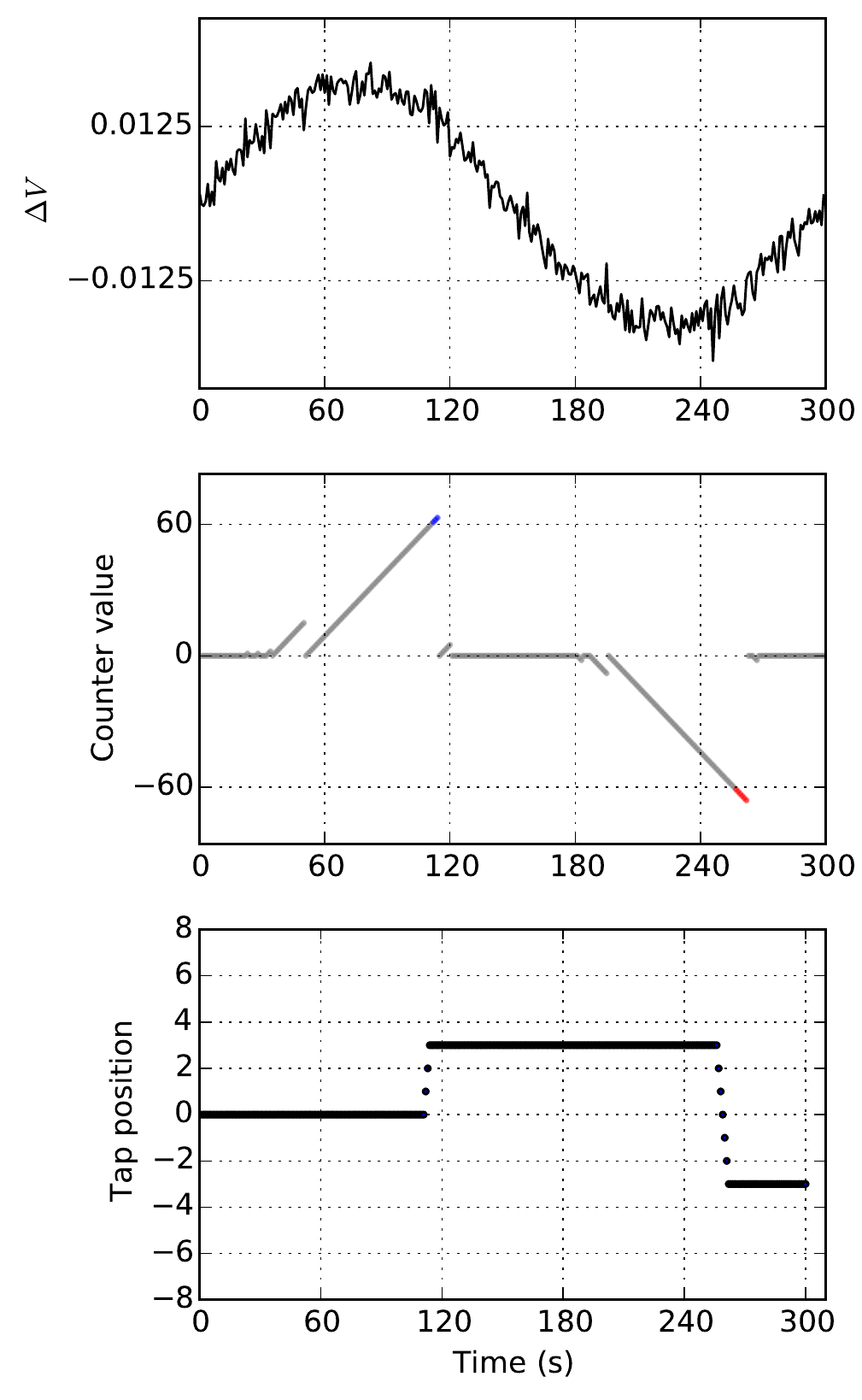
ILTC Model
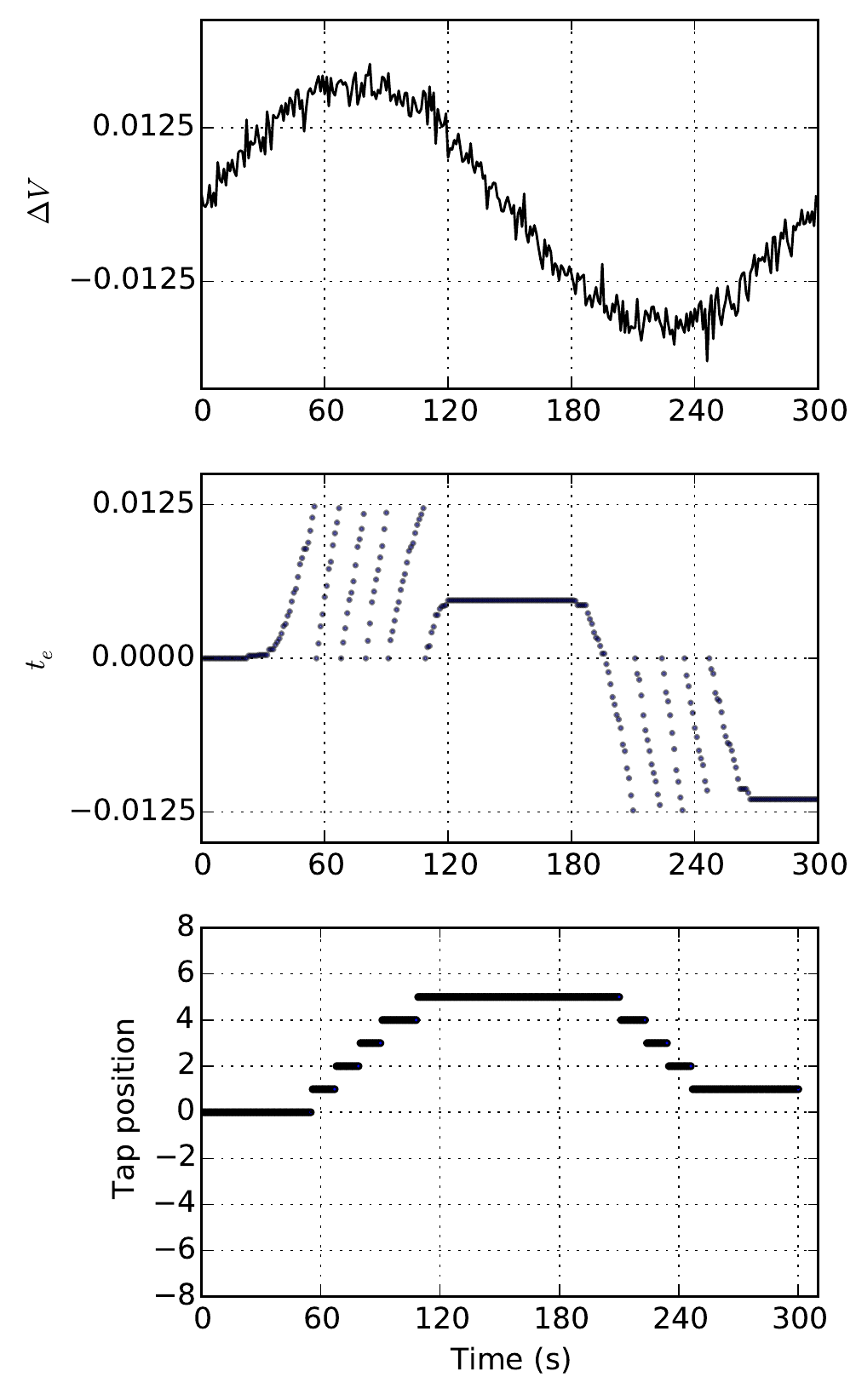
3. LTC Research Overview
Ideas:
- Monitor
- Modify and control
- Optimize existing controller behavior
Monitor
Lots of work in this area at University of Queensland.

- Paper insulation samples (Dr. Daniel Martin)
- Tank vibration signal analysis (Lakshitha Naranpanawe)
- Machine learning on oil samples (gas content), thermal and acoustic samples (Dr. Hui Ma)
Modify and control
Common objectives:
- Minimize losses (difficult!)
- Minimize tap operations (enumerate?)
- Prevent undesirable interactions (hunting, voltage regulator runaway)
Common constraints:
- Power balance
- Voltage limits
- Branch flow constraints (even thermal limits)
- Transformer capacity limits (reverse limit $<$ forward limit)
- Tap limits
- Renewable generation constraints (voltage regulation limits)
Hybrid dynamics. Heuristics and assumptions everywhere!
In the literature
Agalgaonkar et al.: Day-ahead LTC and PV control.
- Objective: fix LTC and PV inverter setpoints to minimize tap operations. \begin{align} f &= \left(\overbrace{W_c}^\text{tap count wt.} \underbrace{\sum_{t=2}^{N}\sum_{T=1}^{N_{tr}} \lvert \text{Tap}_{t,T} - \text{Tap}_{t-1,T} \rvert}_\text{total taps}\right) + \left( \overbrace{W_r}^\text{extreme tap wt.} \underbrace{\sum_{t=1}^{N} \lvert P_t \rvert}_\text{penalty function}\right), \end{align} where \begin{align} P_t &\geq 0 \\ P_t &\geq p_1\text{Tap}_t + p_2 \\ P_t &\geq p_3\text{Tap}_t + p_4, \end{align} and $p_1-p_4$ are penalty function parameters.
- Constraints: many (good example of thoroughness)
Issues and assumptions
- Reliant on day-ahead PV forecasts
- Assumes LTC setpoints are controllable
- Assumes communication between LTCs and solar PV
- Interior-point method
Also in the literature
Park et al.: Day-ahead STATCOM dispatch
Issues and assumptions
- Communication requirements
- Getting stuck with yesterday's forecast
- Reliance on genetic algorithm
4. Optimization setup
Optimize existing controller behavior
Rationale:
- Long time before new devices take over or existing LTCs are retrofitted
- Communication is hard
Combine
- Test network
- Parameters introduced previously
- NREL wind and solar data
Illustrate
- Subtransmission/distribution tradeoff
- Parameter sensitivity
Big idea: explore interaction between LTCs and renewables
Especially impact of renewable voltage regulation on LTC tapping
NREL data
NREL's Wind Prospector provides simulated power data at 100m, assuming site-appropriate turbine power curves.
- Take one year of data at max. resolution (5 min)
- Interpolate to obtain 1-min data
- Similar process for NREL solar PV data
Ready for simulation.
- Let $P_g$ be NREL wind or solar data
- Let $Q_g$ be limited to $[-Q_g^{lim},Q_g^{lim}]$
- Bus 1 begins as PV (voltage specified)
- If reactive power limit encountered, switch to PQ bus
Simulation
Let's first examine extreme cases:
- Case 1: loose renewable regulation, $Q_g^{lim}=0$
- Case 2: tight regulation, $Q_g^{lim}=\infty$
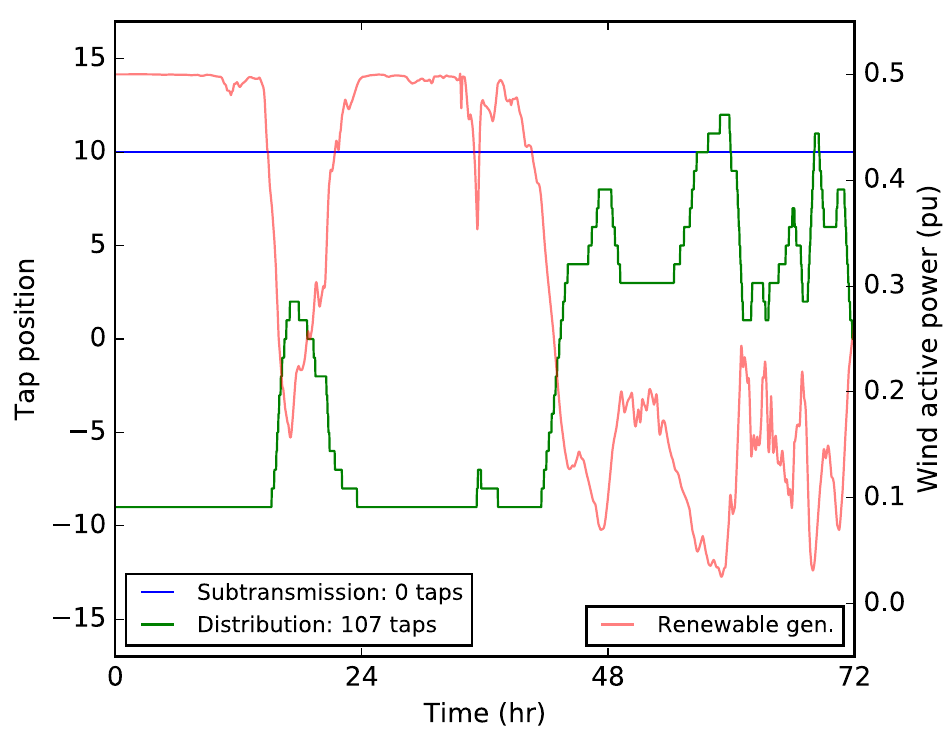
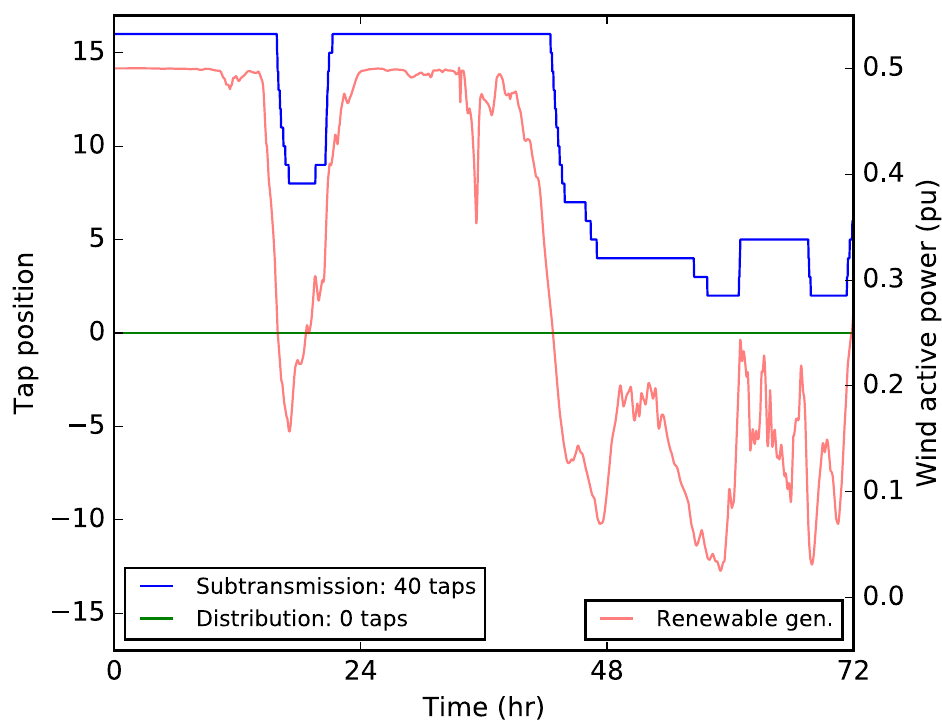
Tapping tradeoff
Time to get a bigger picture
- Sweep through many values of $Q_g^{lim}$
- Simulate for one year at one minute resolution
- Count LTC taps and plot distribution vs. subtransmission
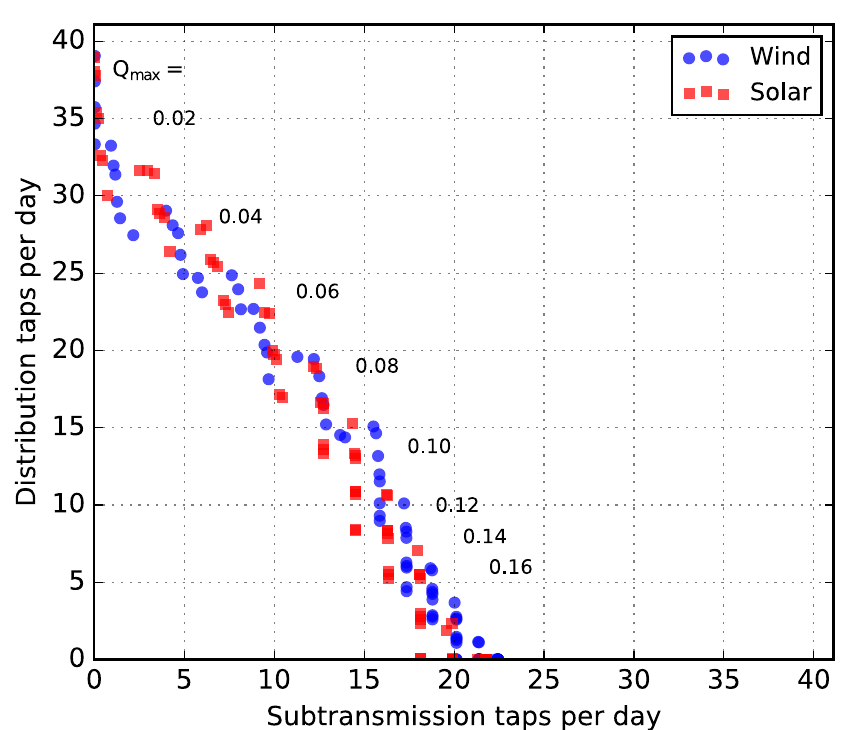
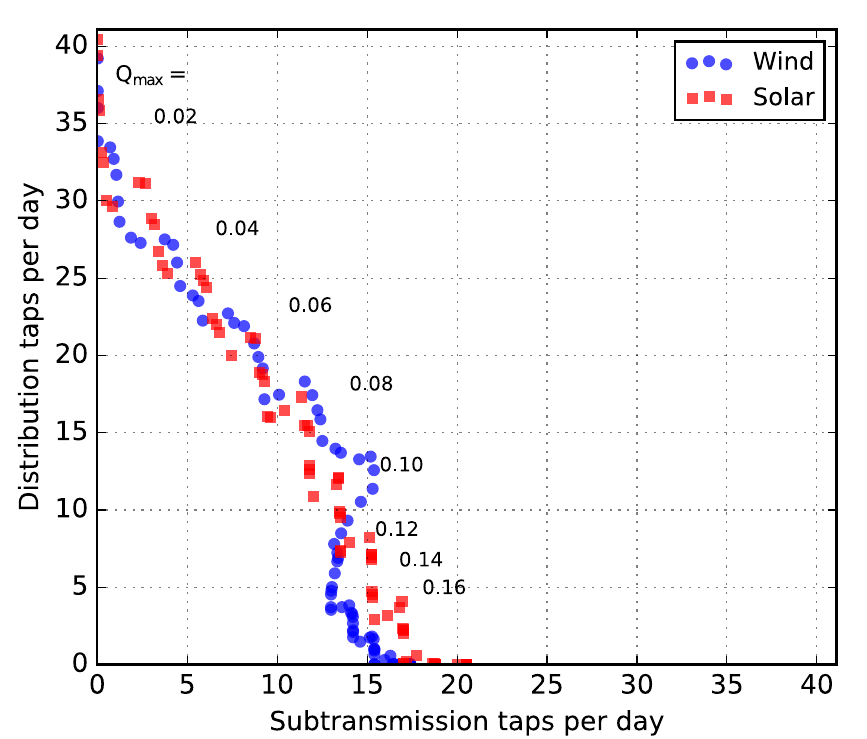
- Total taps decrease as renewable regulation tightens
- But the subtransmission LTC taps more
One more level
- Visualize sensitivity to LTC setpoint
- Overlay multiple tradeoff curves
Conclusions
- LTCs continue to play a key role in power systems.
- Rise in renewables threatens LTC lifespan.
- We can influence tapping behavior without controlling an LTC directly.
- Renewable voltage regulation balances active power fluctuation effects between distribution and subtransmission LTCs.
- The trade-off is nuanced even for simple networks.
- Understanding relationships between parameters is key to developing algorithms for general networks.